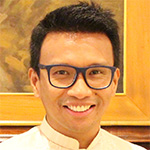 In my previous piece I proposed that we need to rethink religious education so that it becomes a safe space. By that I meant that students must be able to ask questions that they would normally be afraid to in front of stern religious instructors.
In my previous piece I proposed that we need to rethink religious education so that it becomes a safe space. By that I meant that students must be able to ask questions that they would normally be afraid to in front of stern religious instructors.
Some of these questions are already familiar: Isn't truth just a matter of choice? Is religion necessary for a person to be good?
Isn't God ultimately beyond religion? What then do we make of other religious groups?
Implicit to these questions is the validity of religious claims. For some students, subscribing to a faith tradition is no longer viable. The big task of religious education therefore is far bigger than simply transmitting truth.
Sacred canopy
The eminent sociologist Peter Berger, who died recently, once characterized religion as a sacred canopy. Religion, with all its practices and beliefs, offers a coherent worldview based on which people could lead their lives comfortably.
The sacred canopy is what people take for granted: how to pray, what to believe, even what to eat and how to be buried. Religion provides life with a sense of order and meaning.
Problems arise though when that sacred canopy is faced with other worldviews. Science or other faith traditions could challenge its intellectual integrity.
Pluralism, in a manner of speaking, riddles the sacred canopy with holes.
There's no denying that pluralism is what characterizes our state of being today. There are many ways to approach pluralism but for the sake of brevity I will focus only on religious diversity.
Religious diversity
Philippine society is no longer as Catholic as it may have once been. It is true that the population is still predominantly Catholic. But we cannot also deny the visibility of other faith communities in our midst: Evangelicals, Pentecostals, Iglesia ni Cristo, and Muslims.
Religious diversification is, of course, a result of active proselytization. Missionaries – local and foreigners – are setting up congregations around the country. I bet you've seen those white men in white (read: Mormon men).
But at the same time, Philippine society is embedded in a globalized world where religious diversity is a fact of life. The Philippines is now home, for example, to young foreigners, many of whom are studying in our local universities. Indian, Korean, Japanese, and Chinese students bring with them their respective religious traditions. At the same time many OFWs convert and bring back their newfound faith to their respective families.
We are also exposed to a wide array of religious or spiritual worldviews, some of which arrive to us only implicitly. They infiltrate our lives through television shows, movies, novels, and celebrities themselves. If one thinks about it, Nadine Lustre's remark when asked whether she and James Reid were living in, is loaded with moral assumptions that challenge dominant religiosity: "Come on guys, it's 2017... Let's all be open-minded. That's what we need right now."
Philippine society is diverse. The influx of moral and religious worldviews is indisputable. Whether we admit it or not, this diversity has an impact on the way we think and behave.
And the classroom cannot escape this reality. In fact, the classroom today testifies to the diversity of religious beliefs and moral attitudes among students.
Tolerance?
In the classroom as in elsewhere we are confronted with people of other faiths and moral convictions. More often than not, we form our opinions based on what we think we know about them: their food, dress, practices, and prohibitions. These opinions are typically dichotomous: we are what they are not.
Now that is not good enough. Social life cannot go on blind to the religious and moral diversity that is taking shape in our society today. We thus need to be mindful of how our young people are taught.
We assume, for example, that tolerance is good. But how can we exercise tolerance if we do not know to begin with the basic convictions that underpin the moral and religious lives of other people?
Religious education must then brave new questions. What is one's faith's take on this diversity? How does one navigate moral complexity? Can other religions offer new life lessons?
That the world we inhabit is no longer homogeneous might be a problem for religious education. But that is also its opportunity.
The depth of one's faith, after all, is not tested in the afterlife. It needs to confront its biases and manifest its promises. Here. Now.
We need to rethink religious education along these lines. – Rappler.com
Jayeel Cornelio, PhD is one of the 2017 Outstanding Young Scientists of the Philippines. He is the author of Being Catholic in the Contemporary Philippines: Young People Reinterpreting Religion (Routledge, 2016). With Manuel Sapitula and Mark Calano, he wrote the Senior High School worktext Introduction to World Religions and Belief Systems (published by Rex). You can find him on Twitter @jayeel_cornelio.